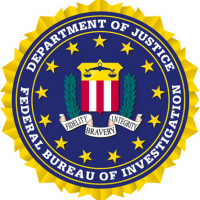FBI’s New Biometric ID System Is a Go

The government’s expanded biometric identification system is officially FOC. That’s the military/government acronym that means the FBI’s Next Generation Identification (NGI) System is now at full operational capability.
The FBI took a phased multi-year approach to replace the previous automated fingerprint ID system with the new NGI program’s technology capabilities that go way beyond matching fingerprints. Today’s NGI technology not only shaves the time spent on high priority ten-print fingerprint searches of potential criminals down from two hours to approximately ten minutes, but it adds other forms of biometric identification as well.
For example, if criminals leave behind palm prints at a crime scene, now those can be searched for in a central repository. Other searchable biometric markers include iris scans, facial imaging, voice recognition, and DNA. The latest of the NGI biometric technologies are Rap Back and the Interstate Photo System (IPS).
The Rap Back feature notifies law enforcement, criminal justice agencies, and probation and parole offices of any later criminal activities of persons already under investigation or supervision. Authorized entities can be notified of any updates to criminal history reports on individuals holding positions of trust. For example, if a teacher passed his initial background check but committed a crime later in the school year, records are updated and authorities can be alerted.
The Interstate Photo System (IPS) facial recognition service provides an image-searching capability of photographs. Admittedly, the IPS is the hot button for groups such as the Electronic Frontier Foundation (EFF). According to an EFF statement, “One of our biggest concerns about NGI has been the fact that it will include non-criminal as well as criminal face images. We now know that FBI projects that by 2015, the database will include 4.3 million images taken for non-criminal purposes.”
That is certainly feasible. The FBI’s NGI program is more far-reaching than when it began managing the nation’s fingerprint data back in 1924. After all, more companies request a background check for employment or licensing today. Many volunteer organizations are now requiring background checks as well, even fingerprints.
Do you volunteer at your child’s school or with a service organization that works with children? There’s a good chance you might find yourself in the FBI database.

